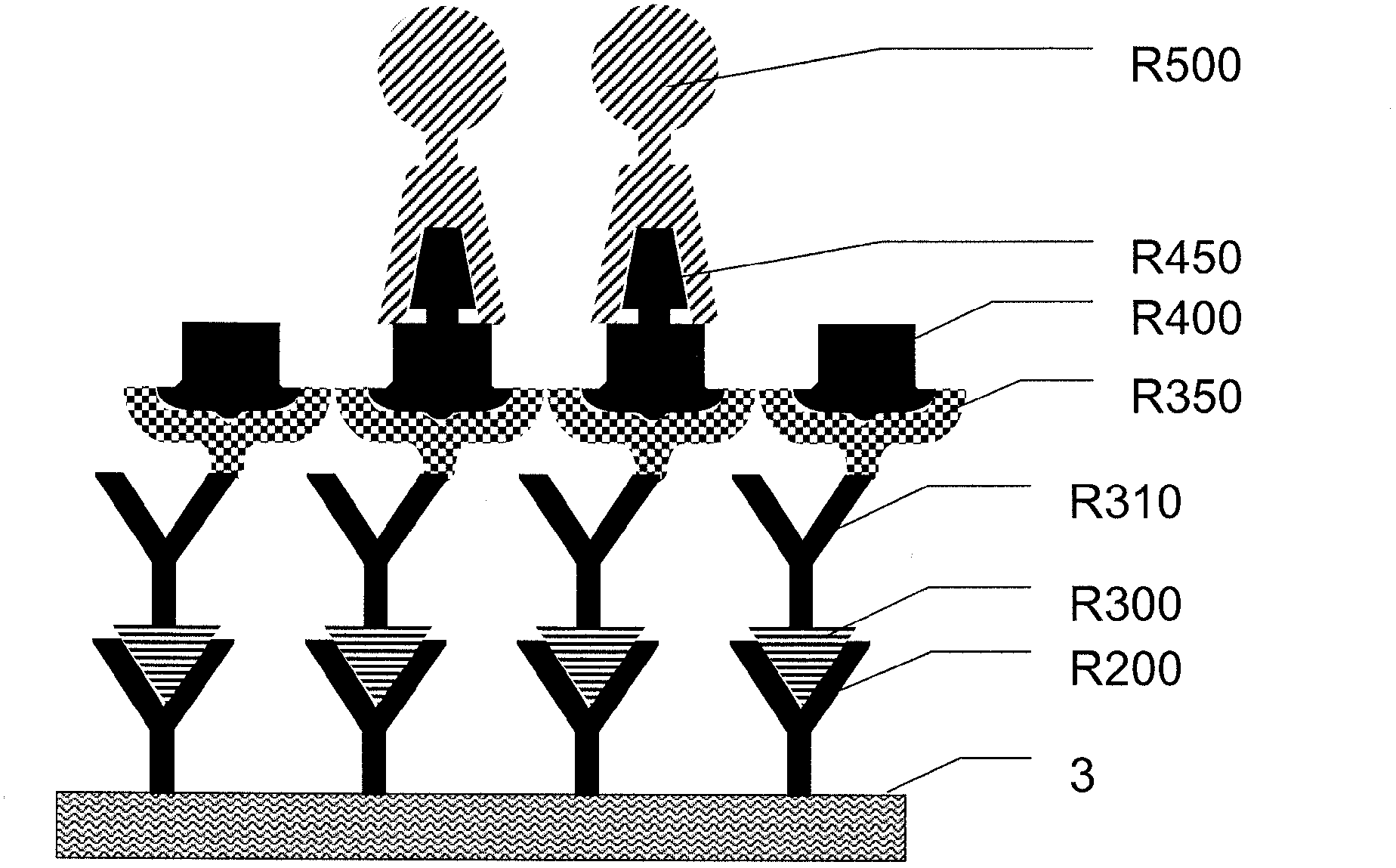Method for determining an analyte content of a liquid sample by means of a bioanalyzer
A bioanalyzer and liquid sample technology, applied in biological testing, analytical materials, measuring devices, etc., can solve the problem of incomplete occupancy of the receptor layer
- Summary
- Abstract
- Description
- Claims
- Application Information
AI Technical Summary
Problems solved by technology
Method used
Image
Examples
Embodiment Construction
[0112] Figure 1a ) is a schematic diagram of a bioanalyzer's regenerable sensor matrix with a receptor R350 and an analyte molecule R400 bound to the receptor R350 and other target molecules R450 also bound to the receptor R350. Used as the substrate 3 of the sensor matrix is a conductive surface bound to thiol groups. This can be for example a gold or platinum surface formed by eg a coating, a film or a solid metal piece such as a small tube. Platinum and gold have a high thiophilic character and are also chemically stable and chemically unaltered, in particular not oxidized, in the face of the electrochemical dissolution of the acceptor layer and the preparation of new acceptor layers described in detail below. The advantages.
[0113] A layer of a first chemical substance, which acts as a binding molecule R200 for the receptor R350, is arranged on the substrate 3 . In the case of a thiophilic surface, such as a gold or platinum surface, the binding molecule R200 used ...
PUM
| Property | Measurement | Unit |
|---|---|---|
| thickness | aaaaa | aaaaa |
| width | aaaaa | aaaaa |
Abstract
Description
Claims
Application Information
 Login to view more
Login to view more - R&D Engineer
- R&D Manager
- IP Professional
- Industry Leading Data Capabilities
- Powerful AI technology
- Patent DNA Extraction
Browse by: Latest US Patents, China's latest patents, Technical Efficacy Thesaurus, Application Domain, Technology Topic.
© 2024 PatSnap. All rights reserved.Legal|Privacy policy|Modern Slavery Act Transparency Statement|Sitemap



